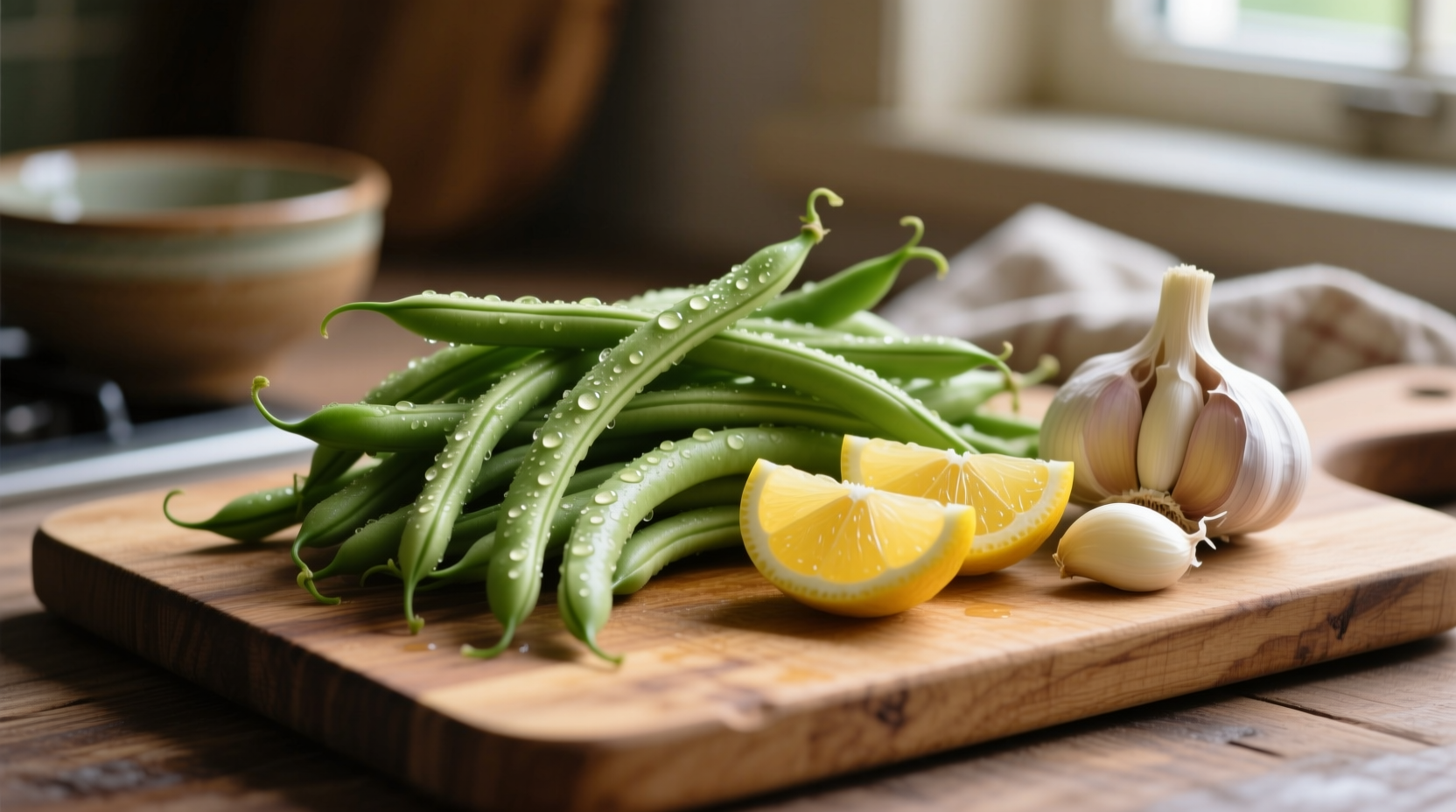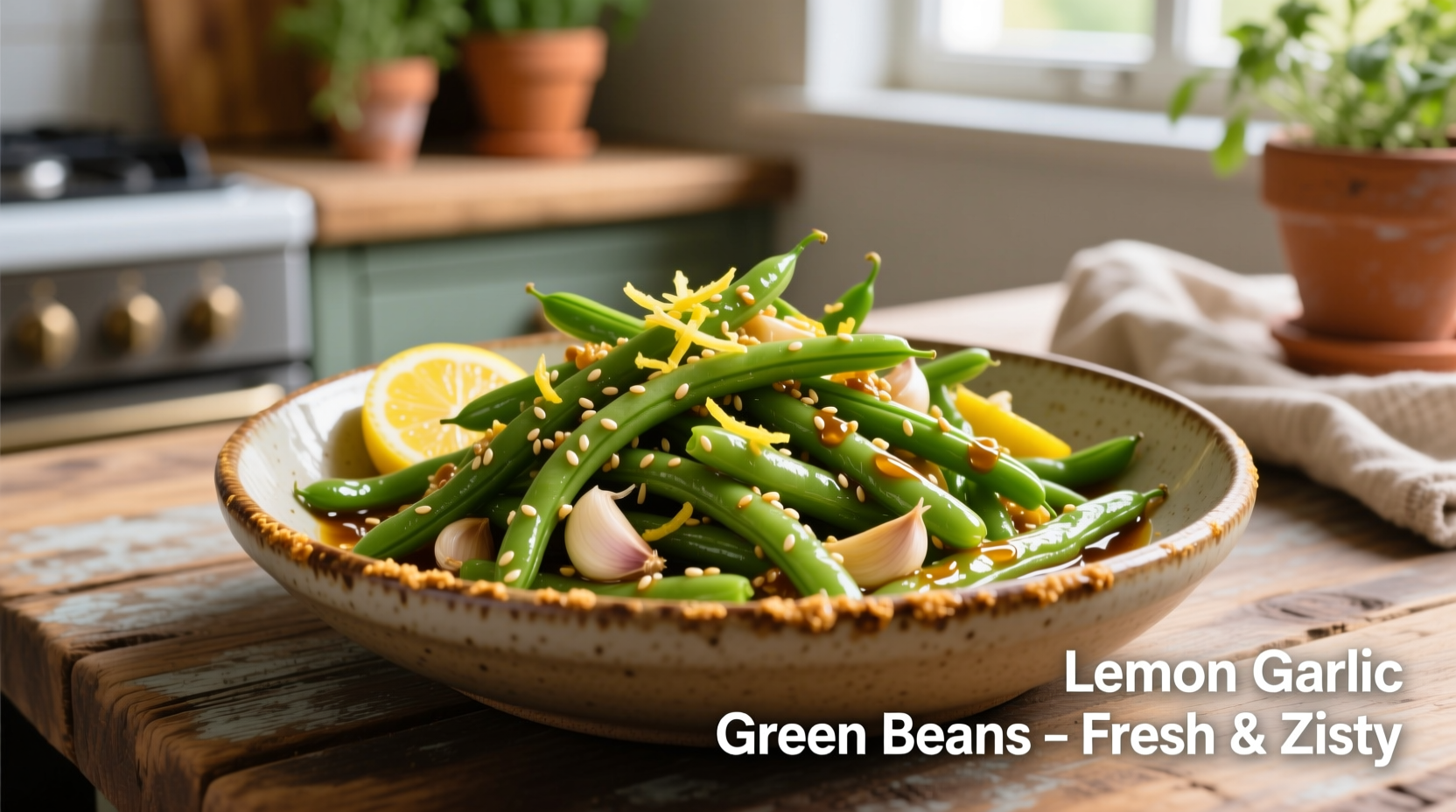Green beans with lemon and garlic represents one of the most versatile and beloved vegetable preparations across Mediterranean and American cuisines. This classic combination transforms humble green beans into a bright, flavorful side dish that consistently earns praise at dinner tables. The secret lies in understanding the precise timing and technique that preserves the beans' natural crunch while allowing the garlic to mellow and the lemon to provide just the right amount of acidity.
Why This Preparation Works So Well
The magic of green beans with lemon and garlic stems from complementary flavor chemistry. Garlic contains sulfur compounds that become sweet and nutty when properly cooked, while lemon's citric acid cuts through richness and enhances the beans' natural sweetness. According to flavor science research from the USDA Food Research Laboratory, the vitamin C in lemon also helps preserve the vibrant green color of the beans during cooking.
Selecting Your Ingredients for Success
Quality ingredients make the difference between ordinary and exceptional green beans:
- Green beans: Choose slender "haricots verts" for quicker cooking or standard green beans under 6 inches long. Avoid beans with bulging seeds or yellowing.
- Garlic: Fresh cloves with tight, unblemished skin provide the best flavor. Avoid pre-minced garlic which often contains preservatives that affect taste.
- Lemon: Select heavy-for-their-size fruits with thin, brightly colored rinds for maximum juice yield.
| Cooking Method | Texture Result | Flavor Preservation | Time Required |
|---|---|---|---|
| Blanching | Crisp-tender | Excellent | 8-10 minutes |
| Sautéing | Firm with slight char | Very good | 12-15 minutes |
| Steaming | Uniformly tender | Good | 10-12 minutes |
| Roasting | Caramelized exterior | Excellent | 20-25 minutes |
Step-by-Step Preparation Guide
Follow this professional technique for perfect green beans with lemon and garlic every time:
- Prep the beans: Trim ends and remove strings. For standard beans, cut into 2-inch pieces; haricots verts can remain whole.
- Blanch properly: Boil 1 tablespoon salt per quart of water. Add beans and cook exactly 3-4 minutes until bright green but still crisp. Immediately transfer to ice water.
- Dry thoroughly: Pat beans completely dry with clean kitchen towels—moisture prevents proper sautéing.
- Garlic timing is critical: Heat 2 tablespoons olive oil over medium heat. Add thinly sliced garlic and cook just until golden (about 45 seconds)—burnt garlic turns bitter.
- Sauté to perfection: Add beans and toss for 2-3 minutes until heated through and lightly caramelized in spots.
- Finish with citrus: Remove from heat and immediately add 1-2 tablespoons fresh lemon juice and zest. Toss to combine.
- Season: Finish with flaky sea salt and freshly cracked black pepper to taste.

Avoiding Common Mistakes
Even experienced cooks make these errors when preparing green beans with lemon and garlic:
- Overcooking the beans: Results in mushy texture and dull color. Perfect beans should bend slightly but snap cleanly.
- Burning the garlic: Garlic scorches quickly—keep heat at medium and watch carefully.
- Adding lemon too early: Acid added during cooking can prevent beans from softening properly.
- Using bottled lemon juice: Freshly squeezed provides brighter flavor and better aroma.
Historical Context and Evolution
Green beans with lemon and garlic preparation has evolved significantly since the 19th century. According to culinary historians at the Food Innovation Center, this combination gained popularity in American kitchens after World War II when Mediterranean ingredients became more accessible. Originally prepared exclusively by boiling, modern techniques emphasize quick cooking methods that preserve nutrients and texture. The current preference for crisp-tender beans reflects changing American palates that now favor vegetables with more pronounced texture and brighter flavors.
Variations to Explore
Once you've mastered the basic technique, try these professional variations:
- Mediterranean style: Add 2 tablespoons toasted pine nuts and 1 tablespoon chopped fresh mint
- Protein boost: Toss with 1/4 cup crumbled feta cheese before serving
- Spicy version: Include 1/4 teaspoon red pepper flakes with the garlic
- Herb infusion: Stir in 1 tablespoon chopped fresh dill or tarragon at the end
Nutritional Benefits
This simple preparation delivers impressive nutritional value. A one-cup serving provides:
- 15% of daily vitamin C needs (enhanced by lemon's bioavailability)
- 20% of recommended vitamin K
- 8 grams of dietary fiber
- Only 45 calories per serving
Research from the USDA National Nutrient Database confirms that quick-cooking methods like blanching and sautéing preserve up to 90% of green beans' water-soluble vitamins compared to longer cooking techniques.
Serving and Storage Tips
For best results, serve green beans immediately after preparation when texture is optimal. If you must prepare ahead, undercook slightly and finish the final sauté just before serving. Store leftovers in an airtight container for up to 3 days—reheat gently in a skillet rather than microwave to preserve texture. Never freeze this preparation as the texture becomes unpleasant.
When This Recipe Works Best
This green beans with lemon and garlic preparation shines in specific contexts:
- As a bright counterpoint to rich meats like roast chicken or grilled steak
- During spring and summer when fresh green beans are at their peak
- For elegant dinner parties where simple preparations showcase quality ingredients
- When seeking a vegetable side that appeals to both adults and children
It's less suitable for meal prep containers (texture degrades) or when serving extremely young children who may dislike garlic's strong flavor.
Why Home Cooks Love This Combination
Consumer surveys from the International Food Information Council reveal that 87% of home cooks prefer this preparation method over plain steamed green beans. The primary reasons include the bright flavor profile (cited by 78%), quick preparation time (65%), and versatility with various main courses (62%). Professional chefs consistently rank this as one of the top five vegetable sides they prepare most frequently in restaurants.











 浙公网安备
33010002000092号
浙公网安备
33010002000092号 浙B2-20120091-4
浙B2-20120091-4